How to clean a humidifier at home?
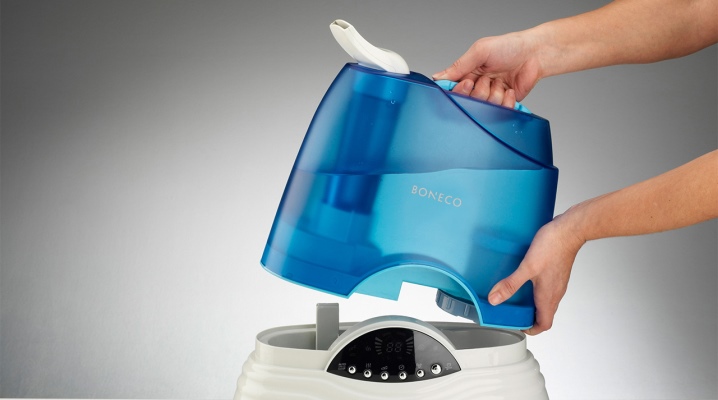
An air humidifier is a useful device that allows you to maintain a comfortable atmosphere in your home or apartment. With its help, it is possible to establish and maintain an optimal microclimate, to escape the heat, and to improve the condition of the skin. But if the device is not looked after, it may break down or become a source of bacterial danger... Consider how to clean a humidifier at home, how regularly you need to do it, how to wash off white bloom with citric acid, and what other cleaning products should be used.

How the devices work
Household air humidifiers are considered devices for seasonal use - the need for them increases in winter, when the natural humidity indicators in the atmosphere are significantly reduced due to artificial heating of the room. On sale, you can find models with a mechanical, steam or ultrasonic principle of operation, performing the same job using different technologies.


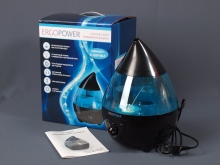
Besides, there are many combined solutions that can additionally disinfect or deodorize the air... The principle of operation of any of these types of technology is quite simple: softened or filtered water poured into the tank is subjected to evaporation and enters the environment in the form of tiny drops of cold fog, which very slowly settle down. During operation, the device can boil the liquid or cause its transformation by vibrating the ultrasonic membrane.


Air exchange processes are also important in the operation of the humidifier. In ultrasonic devices, air masses enter the tank and are passed through a system with a membrane that evaporates water using high-frequency vibrations. At the exit into the atmosphere of the room, cold steam, already saturated with moisture, is emitted, having the specified characteristics. The lack of heating eliminates the risk of burns in such devices.

Steam humidification occurs due to the heating of the liquid and the release of hot, moisture-saturated air into the atmosphere. In this case, the medium boils inside the device, while it is strictly controlled by electronics, and the system itself has several degrees of protection. The body made of heat-resistant plastic is often made multi-layer, it does not heat up from the outside.
Such devices can be used for inhalation or aromatherapy. The design may include a fan to speed up the air exchange processes.


Why can they get dirty?
Usually humidifiers are a construction of an electronic unit and a container with an open or closed evaporator. It is made of durable and hygienic plastic that is chemically neutral to various substances. The main reason for the appearance of contamination inside the device is the aquatic environment, which is a favorable basis for the reproduction of various microorganisms. Most often, the owners of air humidifiers do not pay enough attention to the quality of the liquid poured into the tank. But tap water is characterized by increased hardness, contains mineral salts and other components, which, when the volume of the medium evaporates, change the concentration.
As a result, hazardous chemical compounds settle inside the apparatus, cover its parts, and disrupt electrical conductivity. White plaque or scale that forms on the heating element and the walls of the vessel appears just like this.
If the evaporator is rarely opened, one day you may notice that water has bloomed under its lid. This unpleasant phenomenon is a consequence of the multiplication of microorganisms. Green or black mold can also cover any other surface, hiding in hard-to-reach places.


Why is such a neighborhood dangerous? First of all, the development of pulmonary diseases. Mold spores thrown into the air by the device are a strong allergen, especially dangerous for children and the elderly, whose immune protection is less perfect. It is worth considering that the blooming of water is a direct consequence of poor maintenance of the device. If the interior of the tank is cleaned regularly, it will provide exceptional health benefits.
A humidifier in a home can become dirty not only inside but also outside. If fingerprints are left on the case or a greasy coating forms, this can also pose a danger to the device itself and to the health of others. External cleaning must be carried out simultaneously with the removal of plaque inside the container. In addition, it will be useful to remove dust from the surface of the device during normal cleaning.
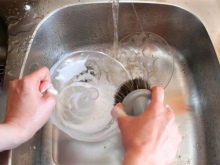


Cleaning methods
In order to properly clean your humidifier at home, it is enough to follow simple and clear instructions. It is imperative to remember that all manipulations are performed only when the device is disconnected from the mains. And also it is imperative to wait until the water in the reservoir of the steam model has cooled down to avoid getting burned. When descaling, the procedure is as follows:
- the device is de-energized, the tank is dismantled, freed from the liquid inside it;
- mechanical cleaning of the walls of the container is carried out using a soft cloth soaked in soapy water; it is prepared from 100 g of grated laundry soap and 200 ml of warm water, thoroughly mixed by shaking;
- the container is wiped on the outside and inside; for hard-to-reach places, brushing with a soft bristle toothbrush is well suited; strong pressure is not needed; to improve the quality of cleaning, the brush is also moistened in soapy water;
- the nozzle is being cleaned - an vinegar solution is used (the ratio of essence and water is 1: 1); it is applied to a soft cloth, you need to wipe off dirt and scale until a satisfactory result is obtained;
- rinsing is performed - all parts of the humidifier are rinsed with clean distilled or running water;
- drying is in progress - first, the parts remain on the dryer, then they are thoroughly wiped off with a soft towel; Drying with a hairdryer or using other heating methods is not recommended.
Important! Do not wash parts of the humidifier in the dishwasher. Such actions are possible only if the manufacturer has indicated the permissibility of such actions in the instructions for the device.


You can descale a humidifier with citric acid. For this, a solution is prepared at a concentration of 50 g of dry powder per 1 liter of water in order to achieve complete dissolution of the ingredients. Then the solution is added to the tank, the device starts up for 1 hour of operation. After that, the reservoir is freed from the liquid, all the structural elements of the device are rinsed.
Mold disinfection is done by several means.
- Vinegar. The essence in a volume of 200 ml is dissolved in 4.5 liters of water, after which the steam apparatus is filled with this mixture and left in working condition for 60 minutes. Ultrasonic types of equipment are cleaned in a de-energized state. The room is well ventilated during processing. Then the mixture is drained, the tank is thoroughly rinsed.
- Hydrogen peroxide. In this case, 2 glasses (500 ml) of hydrogen peroxide in pharmacy concentration are poured into the reservoir removed from the device. The exposure time is 1 hour. Make sure that the agent is in contact with the walls and bottom of the container.
- Chlorine solution - 1 tsp. whiteness is diluted with 4.5 liters of water, the mixture is shaken, poured into the container.The duration of the disinfection process is 60 minutes, then the liquid is drained. Before installation in the device, the reservoir is thoroughly rinsed with water and dried.
Important! With the help of regular disinfection, traces of any pathogenic microorganisms, be it mucus, mold or fungus, can be eliminated.

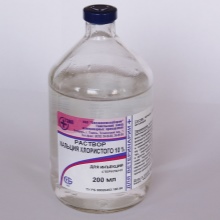
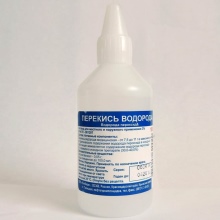
What can not be used to wash a humidifier? Any chemical agents with an aggressive acidic or degreasing composition are definitely not suitable for use.... Liquid for washing dishes, toilets, sinks, freeing from clogging, should be excluded from the list of caring components. Instead of cleaning, they will simply damage the device.
Prophylaxis
Are there preventive measures that allow less frequent cleaning of plaque and extend the life of the device? To reduce the need for global removal of mold and scale, certain rules are recommended.

Among the useful preventive measures are the following:
- always after cleaning, you must first thoroughly dry all removable parts of the humidifier; by installing still wet structural elements, you can increase the risk of mold formation in hard-to-reach places;
- if there are additional replaceable or cleanable filters in the model, they should also be given attention; if they are heavily contaminated, the bacterial balance is disturbed, you should not miss the time for replacing filters, including those that are considered permanent;
- cleaning should be carried out at least 1 time per month, but preferably weekly; with a strong deterioration in the quality of water or a change in the source of its supply, this process must be made more frequent;
- in order to prevent the deposition of hard plaque on the walls, it is enough to regularly look into the tank, replace the liquid in it;
- During a long absence of the owners, it is recommended to completely free the humidifier from water and dry it thoroughly.




By following these guidelines, you can make the constant maintenance of your humidifier less burdensome and easier on the wearer.
See below for how to clean your humidifier.













The comment was sent successfully.